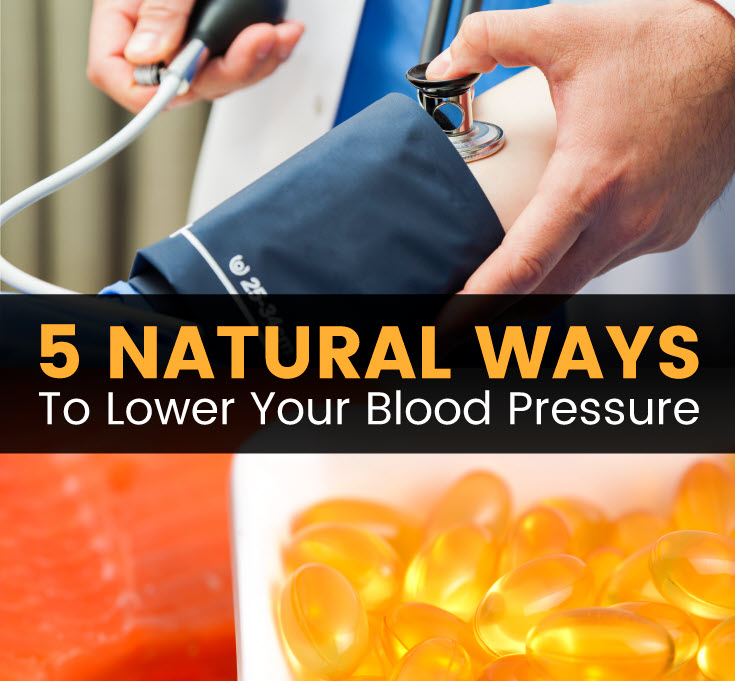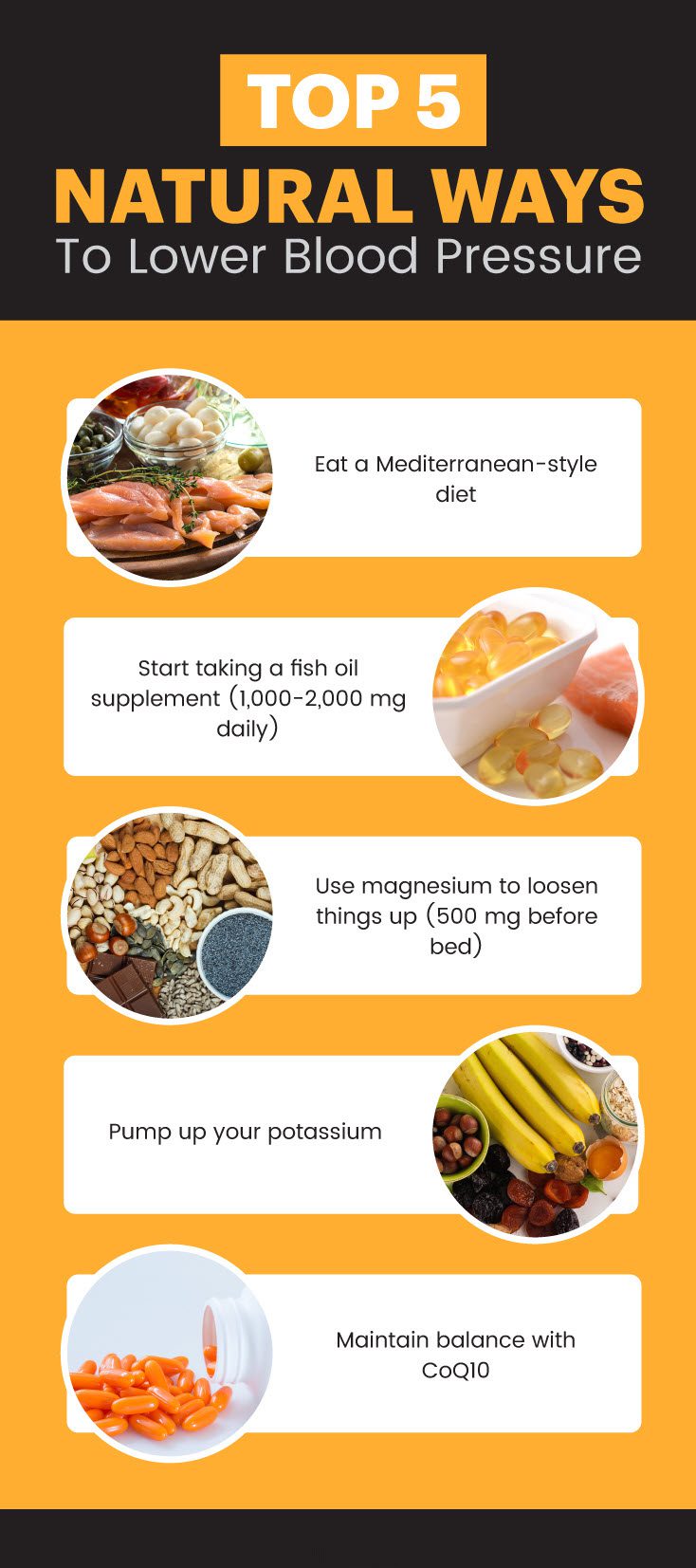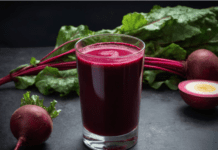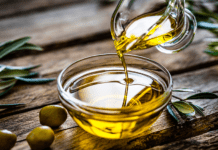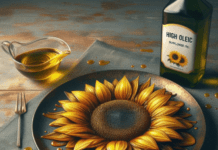How to Lower Blood Pressure
Studies done over the past 20 years have shown that the majority of people in economically developing countries have blood pressure numbers that are higher than they should be, with many experiencing high blood pressure.
In fact, there are millions of people all over the world who are struggling with Hypertension.
As of 2008, the prevalence of elevated blood pressure among adults over 25 years old was about 40 percent worldwide.
Approximately 75 million American adults — that’s 32 percent, or 1 in every three adults — suffer from hypertension.
So How to Lower Blood Pressure
What Is It?
Blood pressure is a combination of systolic and diastolic pressure.
Systolic pressure represents blood force, or pressure, while the heart is beating, and diastolic pressure stands for blood pressure when the heart is at rest.
Systolic is always the first or top measurement in a blood pressure reading.
In a reading of 130/80, 130 represents systolic pressure, and 80 represents diastolic pressure.
In prehypertension, systolic numbers range from 120–129, and diastolic numbers are less than 80.
Blood pressure ranges include:
- Normal: Less than 120/80 mm Hg
- Prehypertension: Systolic between 120–129 and diastolic less than 80
- Stage 1 hypertension: Systolic between 130–139 or diastolic between 80–89
- Stage 2 hypertension: Systolic at least 140 or diastolic at least 90 mm Hg
Numbers for stage 1 hypertension vary from 130–139 for systolic values and 80–89 in diastolic numbers. With stage 2 hypertension, systolic readings are 140 or higher and diastolic readings measure 90 or higher.
Although both numbers are significant, after about age 50, the systolic number is most important.
Only 10 percent of hypertension cases are due to secondary or identifiable causes such as medications, or conditions and diseases of other organs.
Hypertension happens when the pressure on the arteries and blood vessels becomes too high, and the arterial wall becomes distorted, causing extra stress on the heart.
Long term- hypertension increases the risk of stroke, heart attack, and diabetes.
Most Americans don’t even realize they have hypertension until serious problems arise.
Results of Hypertension include:
- Arterial damage
- Aneurysm
- Heart failure
- Blocked or ruptured blood vessels
- Reduced kidney function
- Vision loss
- Loss of cognitive function: concentration, memory, and ability to learn
- Metabolic syndrome: a cluster of metabolic disorders such as high cholesterol and insulin, atherosclerosis, and increased waist size
Frequently, there are no symptoms as blood pressure increases, but warning signs for very high hypertension can include chest pains, confusion,
headaches, ear noise or buzzing, irregular heartbeat, nosebleeds, tiredness, or vision changes.
Causes include:
- A high-salt diet
- Emotional stress
- Alcohol
- Caffeine
- Smoking
- Obesity
- Inactivity
- Birth control pills
- Heavy-metal poisoning
How to Monitor
You can monitor it at home using a home blood pressure monitor.
The American Heart Association recommends using an automatic, cuff-style bicep monitor.
Make sure you buy a monitor that has been validated and with a cuff that fits properly around your upper arm. Then follow these simple steps:
- Don’t exercise, eat, drink caffeinated beverages, or smoke within 30 minutes of measuring.
- Sit still with your back straight and your feet flat on the floor. Follow your monitor’s instructions or ask your doctor how to use it correctly.
- Make sure you check your blood pressure at the same time each day.
- Check it two or three times each time you sit down to measure it. Wait one minute in between each reading. Be sure to track your measurements, either writing them down in a journal or using an online tracker.
You may be wondering how to lower blood pressure.
Below are my top natural ways to do it, and by the way, it should happen fast!
Some plans can take months to see results. With my tips, some of which revolve around anti-inflammatory foods, you can see results in just one day.
5 Natural Ways
So, what are some natural ways to do it?
Some foods reduce blood pressure, as well as supplements and lifestyle changes you can make can also influence blood pressure.
These home remedies are pretty easy to incorporate into your life.
By slowly making these changes to your daily habits, you can create new, healthier routines and a much healthier you.
1. Eat a Mediterranean-style diet
Thanks to foods such as olives and flax seeds,
Mediterranean diets are very high in fruits, vegetables, seafood, and healthy omega-3 rich fat oils.
A grain-free or a low-grain Mediterranean diet, naturally abundant with omega-3 foods, is ideal.
Some of the top foods you want in your Mediterranean diet are olive oil, flax seeds, wild-caught fish (especially salmon), and a lot of fruits and vegetables,
all of which will help lower your blood pressure naturally.
2. Start taking a fish oil supplement (1,000-2,000 mg daily)
One of the leading causes of hypertension is inflammation in the arteries over time.
Study after study has shown consuming fish oil, which is high in EPA and DHA forms of omega-3 fatty acids, reduces inflammation in the body.
So, taking a high quality, 1,000-milligram fish oil dose every single day with your meals is one of the best natural ways to do it.
3. Use magnesium to loosen things up (500 mg before bed)
The mineral magnesium is great because it helps relax your blood vessels and can have an immediate impact on naturally lowering hypertension (and many people have a magnesium deficiency).
So should you take magnesium supplements? Yes, and 500 milligrams daily is a great dose to start with to address issues.
4. Pump up your potassium
An essential element, potassium — and high-potassium foods such as avocado and melon — helps counteract the effects of sodium and guard against hypertension.
Some of the best potassium-rich foods include coconut water and bananas.
Coconut water is an excellent choice if you want something a little bit sweet to drink throughout the day.
Another delicious way to overcome potentially low potassium levels and naturally lower your pressure is to use coconut water as the liquid base for your superfood smoothie in the morning.
Interestingly, potassium supplements are usually not as effective as only eating foods high in potassium.
It’s best not to take a potassium supplement in high doses unless otherwise directed by a doctor.
5. Maintain balance with CoQ10
Coenzyme Q10, more commonly known as CoQ10, is an antioxidant critical for supporting heart health.
It’s crucial if you’ve ever been on blood pressure or, in particular, a cholesterol-lowering medication.
Two-to-three hundred milligrams of Coenzyme Q10 per day is an excellent, natural remedy.
Top Foods Diet
One of the best things you can do to lower your blood pressure is to eat a healthy, hypertension diet.
Read on below to find out more about what foods are right.
- High fiber foods: Unprocessed foods high in fiber such as vegetables, fruits, and seeds should be the basis of any healthy diet. If you’re wondering how you can stabilize your blood pressure, eating foods high in healthy fiber can help.
- Low sodium foods: Excess salt consumption raises hypertension. Limit your consumption to no more than 1,500–2,000 mg daily.
- High potassium foods: Potassium counteracts the effects of sodium and helps lower hypertension. Include foods like melons, avocados, and bananas.
- Omega-3 rich foods: Consume omega-3 rich foods like grass-fed beef, wild-caught salmon, chia, and flax seeds to reduce inflammation.
8 Foods That Reduce Blood Pressure:
1. Dark chocolate:
Look for dark chocolate that contains at least 200 milligrams of cocoa phenols.
2. Garlic:
Garlic and garlic supplements can help and relax smooth muscles. Research on the health benefits of garlic is finding more and more miraculous effects.
Among them, garlic seems to help thin the blood, prevent the blockage in blood vessels, and, therefore lower hypertension.
3. Spinach:
Spinach is rich in magnesium and folate, which can help prevent cardiovascular disease.
4. Sunflower Seeds:
Rich in potassium, magnesium, and healthy plant fats, sunflower seeds can help reduce cholesterol levels, open up blood vessels, and promote healthy pressure.
5. Bananas:
Bananas contain loads of potassium and fiber.
6. Tomatoes:
Tomatoes are loaded with calcium, potassium, vitamins A, C, and E, and lycopene.
Compounds in tomatoes can lower cholesterol buildup in blood vessels and combat the development of hypertension in a variety of ways.
Lycopene, one of the tomato’s most useful compounds, is activated by heat, so add tomatoes to your next chili or stew.
7. Broccoli:
Broccoli has been found to have a whole host of beneficial health effects, including high amounts of potassium and chromium that help regulate blood sugar levels and weight, both related to hypertension.
8. Melon:
Melon is rich in potassium. Cantaloupe and watermelon are especially rich sources.
Blood Pressure Foods to Avoid
- High sodium foods: Sodium raises hypertension; avoid high sodium processed foods, pickles, olives, or canned foods.
- Trans fats and Omega-6 fats: These fats increase inflammation and blood pressure and are found in packaged foods and conventional meats.
- Sugar: High sugar consumption is connected to hypertension.
- Caffeine: Too much caffeine can cause an increase in blood pressure.
- Alcohol: Narrows arteries and can increase blood pressure.
Lifestyle Tips to Lower Blood Pressure
So, are you wondering how to lower blood pressure besides changing your diet? Reducing stress can lower blood pressure.
Some other natural ways to lower blood pressure include getting better sleep, scheduling in more free-time and fun, surrounding yourself with encouraging friends and exercising daily.
Regular exercise and diet play a large role in the development (or not) of hypertension.
Another one of the most dangerous components of the Western lifestyle is stress.
Managing stress includes relaxation techniques such as deep breathing, yoga, journaling, or art therapy.
You can raise your blood pressure to alarming levels just by thinking or stressing about events.
Imagined events have as much physiological effect as real ones. This is the basis of post-traumatic stress disorder (PTSD), and the improvement of performance in businessmen and Olympic athletic gains through visualization.
The best preventative measure to high blood pressure? A healthy lifestyle. It’s common sense.
Essential Oils for Blood Pressure
Another of the many natural ways to lower blood pressure is to incorporate some key essential oils into your daily lifestyle.
Essential oils can lower blood pressure by dilating arteries, acting as antioxidants to reduce oxidative stress, and by decreasing emotional stress.
The most effective essential oils for lowering blood pressure are lavender, ylang-ylang, clary sage, and frankincense.
Precautions
Talk with your natural doctor about how to lower blood pressure naturally and safely.
Check with your doctor before making significant diet and exercise changes.
If you’re taking any medications, you’ll also want to make sure there are no drug interactions with any natural supplements you plan to take.
Final Thoughts
- Blood pressure is a combination of systolic and diastolic pressure.
- Hypertension happens when the pressure on the arteries and blood vessels becomes too high, and the arterial wall becomes distorted, causing extra stress on the heart.
- You can monitor your blood pressure by measuring your pulse rate.
- Try natural ways to lower blood pressure like dietary changes, stress relievers, and exercise.
- Check with your doctor before making any primary diet or exercise changes or trying new supplements.

